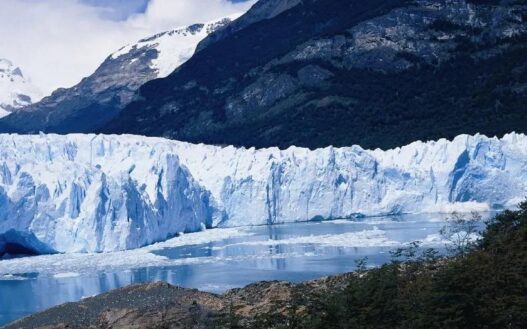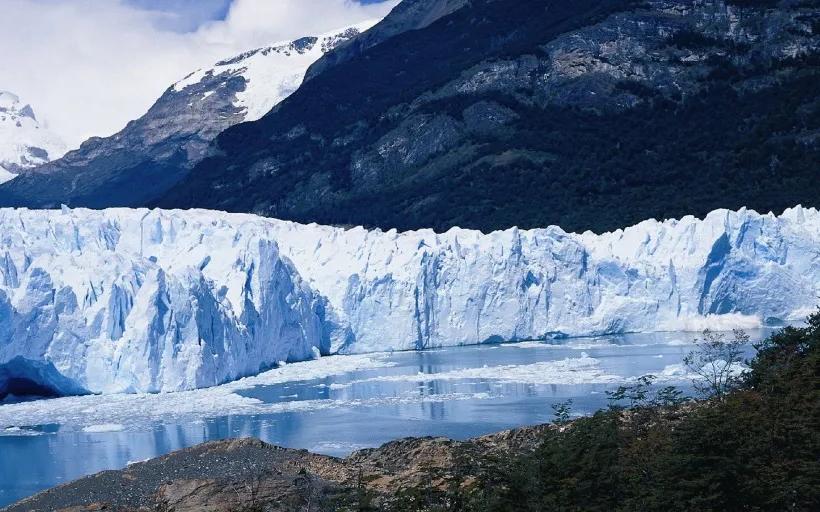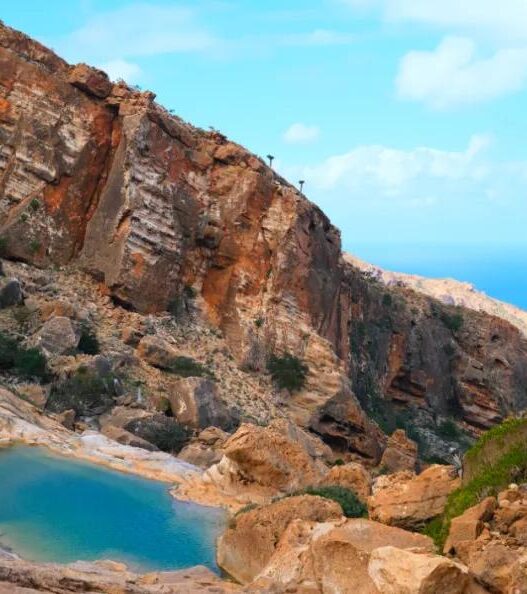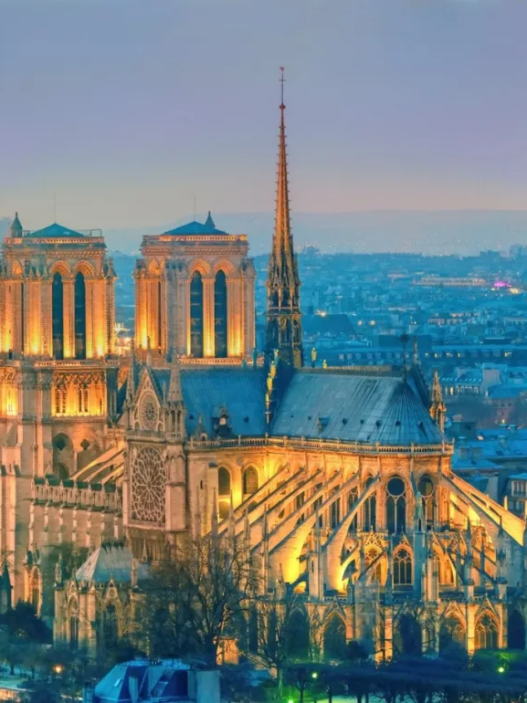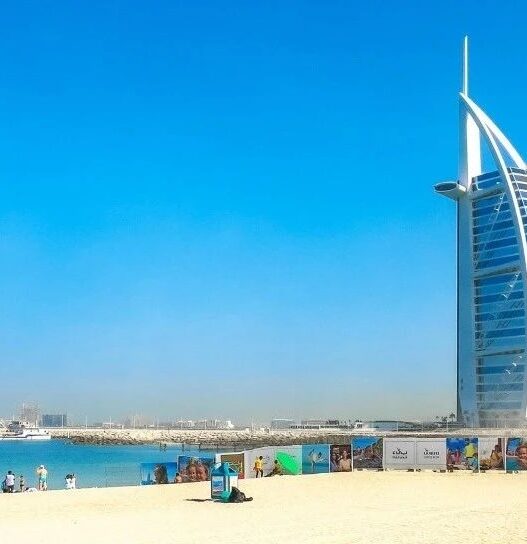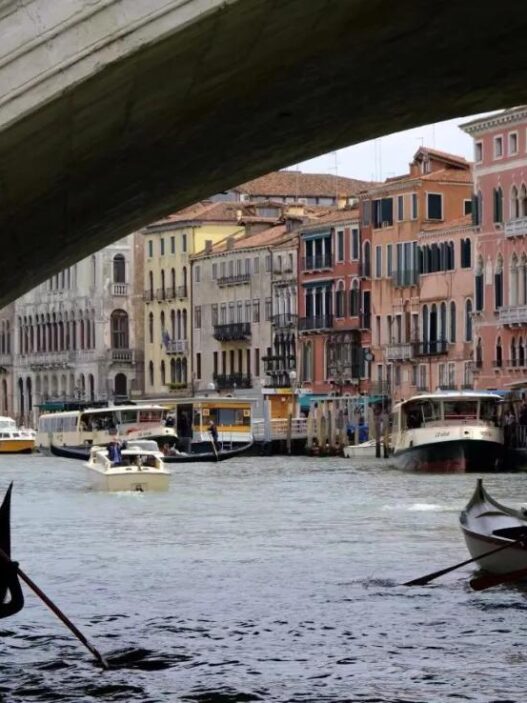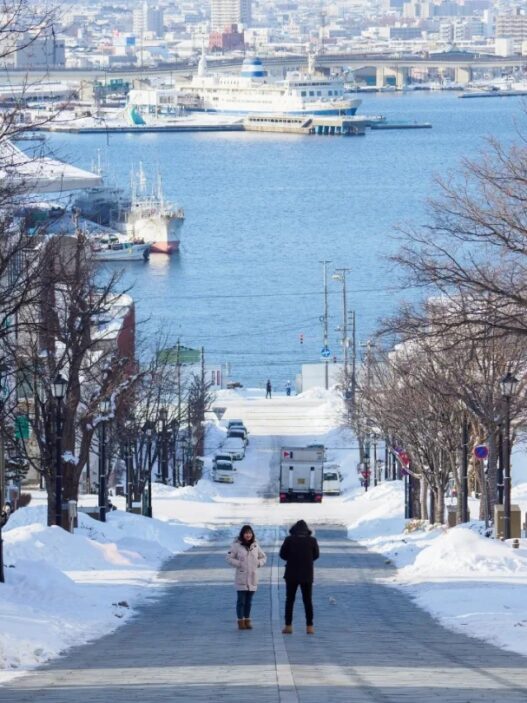There’s a particular shade of blue so pure, so dynamic, that it feels like the very essence of nature. It changes from deep to light, reminiscent of both a shifting sky and ever-changing lake waters. Welcome to the world of Argentina Lake’s Glacier Blue, a breathtaking blue that will leave you mesmerized as you encounter what feels like the “end of the world.”
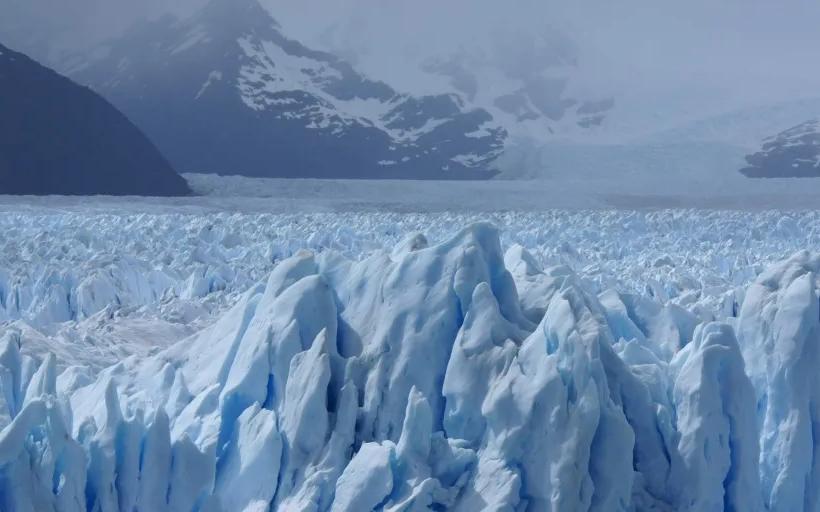
In this serene, green-tinted lake, more than 300 glaciers are scattered across its surface, forming a magnificent natural spectacle.
Argentina is a place that must be explored, and the Argentina Lake should not be missed. It’s like a brilliant jewel nestled at the “end of the world,” where a trek through lush forests leads you to a pristine, crystal-clear glacial lake.
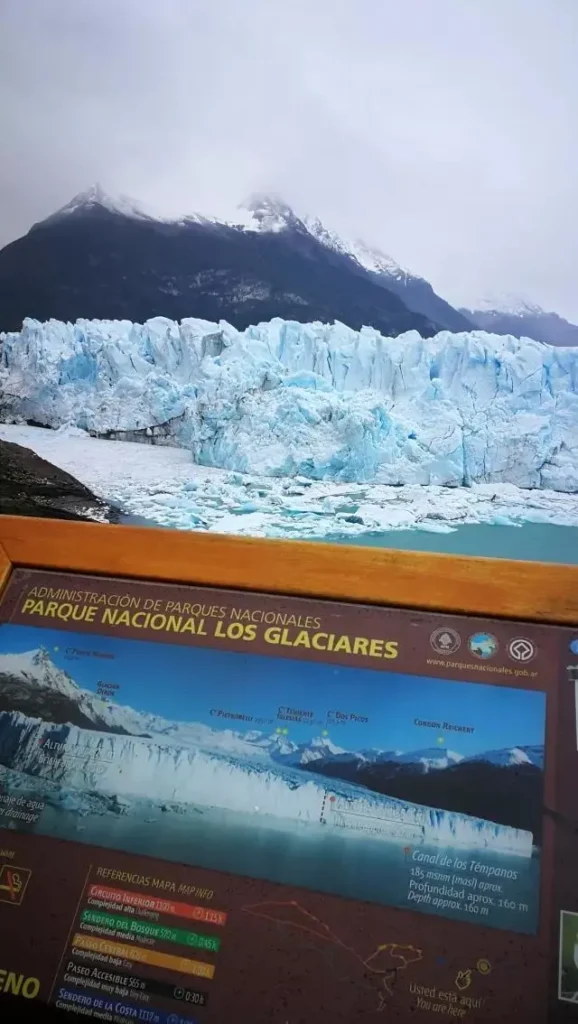
About Argentina Lake
Argentina Lake is one of South America’s most famous glacial lakes, located in the southern part of Argentina, in Santa Cruz Province. It covers an area of 1,466 square kilometers, making it the largest lake in Argentina and the third-largest in South America. Sitting at an elevation of 187 meters above sea level, it reaches depths of up to 500 meters.
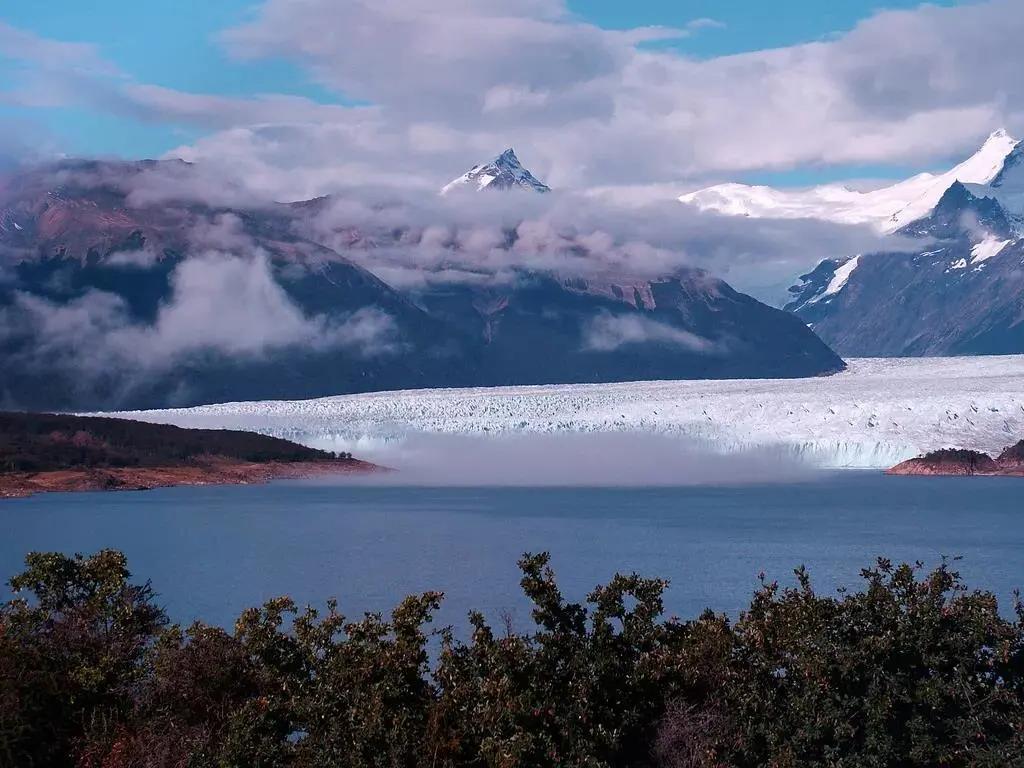
The lake is renowned for its incredible ice formations. It receives ice flows and blocks from over 150 glaciers nearby. These massive ice chunks collide and move slowly forward. Sometimes, they form towering ice walls that reach up to 80 meters high. Eventually, the glaciers converge into the lake, creating magnificent icebergs that rise like white sculptures. The surrounding snow-capped peaks and dense forests make this place a stunning and popular travel destination in Argentina.
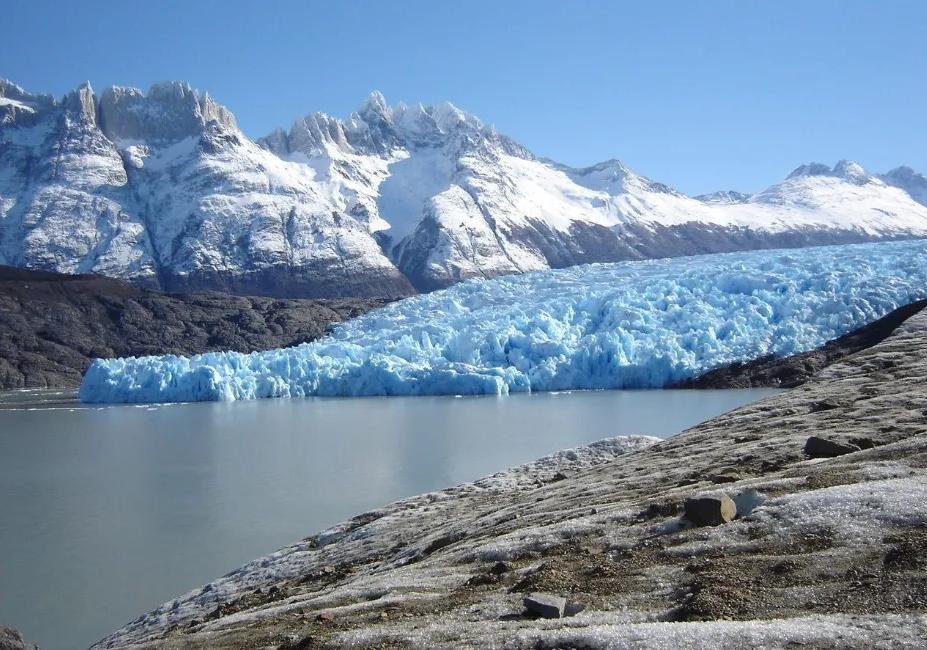
Travelers who visit this glacial lake are often in awe of the fairytale-like beauty of the landscape. You can sit by the lake’s rocky shore and peacefully take in the scenery—just be sure to wear comfortable, non-slip shoes and a windproof jacket.
Exploring the Glaciers of Argentina Lake
The Argentina Lake Glacier is one of the few active glaciers in the world. Towering 20 stories high and stretching over 30 kilometers, this glacier is about 200,000 years old, making it relatively young in geological terms. The glacier moves forward every day at a rate of 30 centimeters, forming what looks like a giant “ice wall.” Standing before it, you can almost feel the chill of the ice age.
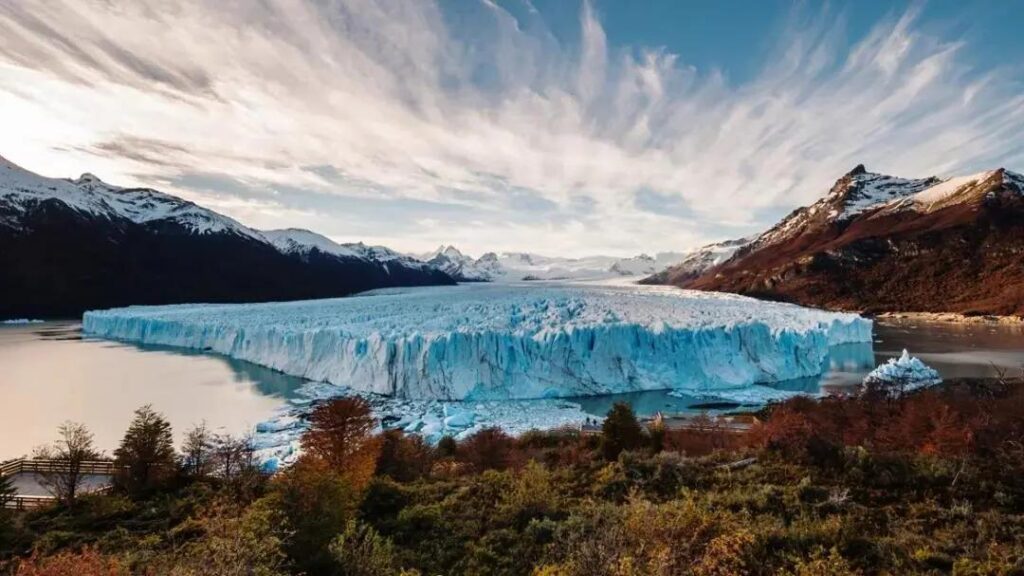
One of the most stunning sights here is the phenomenon known as “calving,” where large chunks of ice break off and crash into the lake with an ear-splitting roar. Yet, after each dramatic collapse, the scene quickly returns to an eerie silence.
The mix of calm beauty and icy blue-and-white colors creates a refreshing and pure ambiance, and the continuous sounds of the ice cracking seem to echo the unpredictable rhythm of life itself—sometimes turbulent, other times tranquil.
Why Are Glaciers Blue?
The blue color of glaciers is a fascinating natural phenomenon. As snow accumulates and compresses over time, it becomes highly transparent, allowing it to reflect blue light. The more compact the ice, the bluer it appears. Additionally, the oxygen content within the glacier plays a role; the higher the oxygen content, the more intense the blue hue.
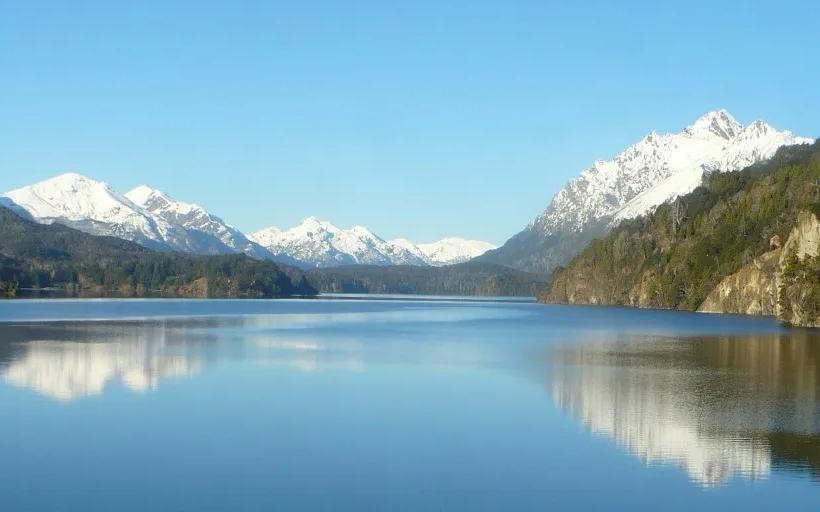
Argentina Lake and the Perito Moreno Glacier (a notable glacier in the area) embody all elements of beauty: snow-capped mountains, lakes, forests, meadows, and glaciers. These elements blend together harmoniously. What is striking is that glaciers, typically found only in cold, high-altitude regions, exist here in a temperate forest setting. Flowers and greenery decorate the ice, a rare sight and a testament to the area’s extraordinary beauty.







